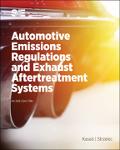Search
Author
- Craig, John J. (1)
- Kasab, John J. (1)
- Trần, Quang Vinh (1)
- Vũ, Cao Đàm (1)
- next >
Subject
- Automotive Emissions (1)
- computer science (1)
- exhaust (1)
- mechanical engineering (1)
- next >
Date issued
- 2010 - 2020 (4)
- 2007 - 2009 (2)
Search Results
Tài liệu tham khảo hướng dẫn phương pháp nghiên cứu khoa học để đạt được hiệu quả và năng suất cao, đưa ra các phương pháp từ những bước căn bản nhất |
Tài liệu Nguyên lý Kỹ thuật điện tử trình bày về nguyên tắc hoạt động cơ bản của các linh kiện và mạch điện tử thông dụng. Ngày nay kỹ thuật điện tử được áp dụng hêt sức rộng rãi trong nhiều lĩnh vực khoa học công nghệ và đời sống. |
Thông tư này hướng dẫn hoạt động chuyên môn, kỹ thuật truyền máu, bao gồm: tuyển chọn người hiến máu, lấy máu, xét nghiệm, điều chế, bảo quản, vận chuyển, quản lý, sử dụng máu và chế phẩm máu trong điều trị; giám sát nguy cơ trong truyền máu; Hội đồng truyền máu tại cơ sở khám bệnh, chữa bệnh; lưu giữ hồ sơ và chế độ báo cáo. |
Thông tư của Bộ Y tế quy định về thực hành tốt sản xuất thuốc, nguyên liệu làm thuốc |
For senior-year or first-year graduate level robotics courses generally taught from the mechanical engineering, electrical engineering, or computer science departments.
Since its original publication in 1986, Craig’s Introduction to Robotics: Mechanics and Control has been the market’s leading textbook used for teaching robotics at the university level. With perhaps one-half of the material from traditional mechanical engineering material, one-fourth control theoretical material, and one-fourth computer science, it covers rigid-body transformations, forward and inverse positional kinematics, velocities and Jacobians of linkages, dynamics, linear control, non-linear control, force control methodologies, mechanical design aspects, and programming of robots. |
The objective of this book is to present a fundamental development of the science and engineering underlying the design of exhaust aftertreatment systems for automotive internal combustion engines.
No pre-requisite knowledge of the field is required: our objective is to acquaint the reader, whom we expect to be new to the field of emissions control, with the underlying principles, control methods, common problems, and fuel effects on catalytic exhaust aftertreatment devices. We do this in hope that they can better understand the previous and current generations of emissions control, and improve upon them.
This book is designed for the engineer, researcher, designer, student, or any combination of those, who is concerned with the control of automotive exhaust emissions. It includes... |






